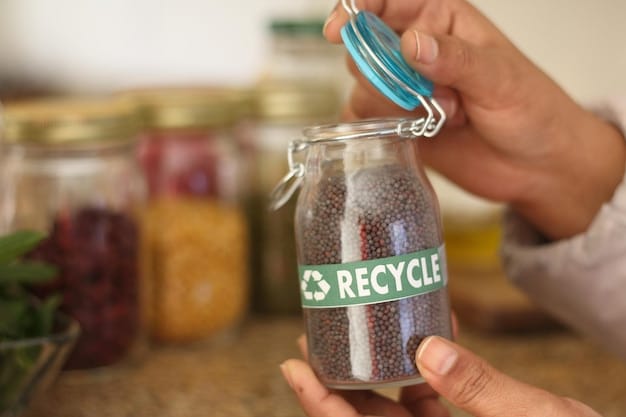The Latest Updates to Environmental Policies: A Guide for US Businesses and Consumers

The Latest Updates to Environmental Protection Policies: What It Means for Businesses and Consumers involves understanding new regulations, adapting business practices, and making informed consumer choices to promote sustainability and compliance.
Staying informed about the latest updates to environmental protection policies: what it means for businesses and consumers is crucial in today’s rapidly changing world. These policies not only shape how businesses operate but also influence the choices consumers make. Understanding these updates ensures compliance, promotes sustainability, and helps both businesses and consumers contribute to a healthier planet.
Understanding the Evolving Landscape of Environmental Protection Policies
Environmental protection policies are constantly being revised and updated to address emerging challenges and reflect advancements in technology and scientific understanding. These changes impact various sectors, requiring businesses and consumers to adapt their practices. Staying ahead of these changes is not just about compliance; it’s also about leveraging opportunities for innovation and sustainable growth.
Key Areas of Policy Updates
Several key areas are often the focus of environmental policy updates. These include regulations related to emissions, waste management, resource conservation, and biodiversity protection. Understanding these specific areas is vital for businesses and consumers alike.
- Emissions Standards: Updates to emission standards typically involve stricter limits on pollutants released into the air and water. These standards often necessitate investments in cleaner technologies and processes.
- Waste Management: Policy changes in waste management often focus on reducing landfill waste, promoting recycling, and encouraging the adoption of circular economy models.
- Resource Conservation: Updates in this area aim to promote the efficient use of natural resources, such as water and energy, through various incentives and regulations.
- Biodiversity Protection: Policies focused on biodiversity protection seek to conserve ecosystems and protect endangered species, often impacting land use and development practices.
Keeping abreast of these key areas ensures that businesses and consumers can proactively adjust their operations and behaviors to align with environmental goals. By understanding the latest updates to environmental protection policies: what it means for businesses and consumers, everyone can play a role in creating a more sustainable future.

Impact on Businesses: Compliance and Adaptation
Businesses face significant impacts from the latest updates to environmental protection policies: what it means for businesses and consumers. Compliance with these policies is not only a legal requirement but also a key factor in maintaining a positive brand image and attracting environmentally conscious customers. Adaptation often involves implementing new technologies, modifying operational processes, and investing in employee training.
Strategies for Compliance
Businesses can employ several strategies to ensure compliance with evolving environmental policies. These strategies include conducting regular environmental audits, investing in cleaner technologies, and implementing robust environmental management systems.
- Environmental Audits: Regular audits help identify areas of non-compliance and opportunities for improvement.
- Clean Technologies: Investing in technologies that reduce emissions and waste can help businesses meet stricter environmental standards.
- Environmental Management Systems: Implementing systems like ISO 14001 can provide a structured approach to managing environmental responsibilities.
By proactively addressing these areas, businesses can mitigate risks and capitalize on opportunities presented by the growing emphasis on sustainability. Embracing the latest updates to environmental protection policies: what it means for businesses and consumers can lead to long-term cost savings and a competitive edge in the marketplace.
Consumer Choices and Environmental Responsibility
Consumers also play a crucial role in promoting environmental sustainability. With the latest updates to environmental protection policies: what it means for businesses and consumers, individuals are increasingly empowered to make informed choices that support environmental goals. This includes purchasing eco-friendly products, adopting sustainable lifestyles, and advocating for stronger environmental protections.

Making Informed Decisions
One of the most effective ways consumers can contribute to environmental protection is by making informed purchasing decisions. This involves considering the environmental impact of products and services, and choosing options that minimize harm.
Consumers who understand the latest updates to environmental protection policies: what it means for businesses and consumers can actively seek out products with eco-labels, such as the Energy Star label or the USDA Organic label. These labels provide assurance that products meet certain environmental standards and are produced in a sustainable manner.
Furthermore, consumers can support businesses that prioritize sustainability by choosing to purchase from companies with strong environmental commitments. This can include companies that use renewable energy, reduce waste, and engage in responsible resource management. By aligning their purchasing decisions with environmental values, consumers can drive demand for more sustainable products and practices.
Navigating the Complexity of Environmental Regulations
Environmental regulations can be complex and challenging to navigate, especially for small businesses and individual consumers. The latest updates to environmental protection policies: what it means for businesses and consumers often involve intricate details and requirements, making it difficult to stay fully informed and compliant. However, there are resources available to help Demystify these regulations and make them more accessible.
Resources for Businesses and Consumers
Several resources are available to assist businesses and consumers in Understanding and complying with environmental regulations. These resources include government agencies, industry associations, and non-profit organizations. Government agencies, such as the Environmental Protection Agency (EPA), provide detailed information on environmental policies and regulations, as well as guidance on compliance requirements. Industry associations often offer training programs and resources to help businesses meet environmental standards. Non-profit organizations can provide advocacy and educational services to promote environmental awareness and support sustainable practices.
Navigating the latest updates to environmental protection policies: what it means for businesses and consumers requires a proactive approach to staying informed and seeking assistance when needed. By leveraging the available resources and engaging with experts, both businesses and consumers can effectively manage their environmental responsibilities and contribute to a more sustainable future.
The Role of Technology in Environmental Protection
Technology plays a crucial role in advancing environmental protection efforts. From clean energy solutions to advanced pollution monitoring systems, technology offers innovative ways to address environmental challenges and promote sustainability. Understanding the latest updates to environmental protection policies: what it means for businesses and consumers is important to ensure that investments in technology align with regulatory requirements and environmental goals.
Examples of Green Technologies
There are numerous examples of green technologies that are helping to reduce environmental impact and promote sustainability. These include solar energy, wind power, electric vehicles, and advanced recycling systems. Solar energy and wind power provide clean, renewable sources of electricity that can reduce reliance on fossil fuels and lower greenhouse gas emissions. The use of electric vehicles can significantly reduce air pollution in urban areas. Advanced recycling systems can help to recover valuable materials from waste streams and reduce landfill volumes.
By embracing technological innovation and aligning their operations with environmental policies, businesses can drive positive change and create a more sustainable future. For consumers, understanding the latest updates to environmental protection policies: what it means for businesses and consumers helps them choose products and services that are environmentally friendly, supporting the growth of a green economy.
| Key Point | Brief Description |
|---|---|
| ♻️ Policy Updates | Evolving regulations in emissions, waste, and resource use. |
| 🏢 Business Impact | Compliance requires updated tech and management systems. |
| 🛍️ Consumer Role | Informed choices drive demand for sustainable products. |
| 🌱 Green Tech | Clean solutions like solar, wind, and recycling innovations. |
Frequently Asked Questions
Key areas include emissions standards, waste management, resource conservation, and biodiversity protection, all designed to promote a healthier environment.
Businesses can ensure compliance through regular audits, investing in cleaner technologies, and implementing environmental management systems like ISO 14001.
Consumers drive sustainability by making informed purchasing decisions, supporting eco-friendly products, and advocating for stronger environmental protections.
Resources are available from government agencies like the EPA, industry associations, and non-profit organizations, all offering guidance and support.
Technology offers solutions like renewable energy, electric vehicles, and advanced recycling systems, reducing environmental impact and promoting sustainability.
Conclusion
Staying informed about the latest updates to environmental protection policies: what it means for businesses and consumers is essential for fostering a sustainable future. By understanding and adapting to these changes, businesses and consumers can collectively contribute to a healthier planet.





